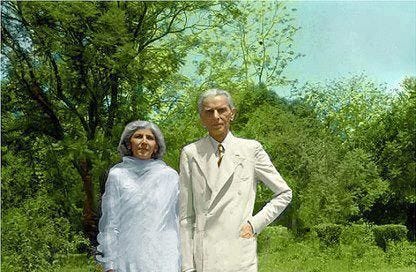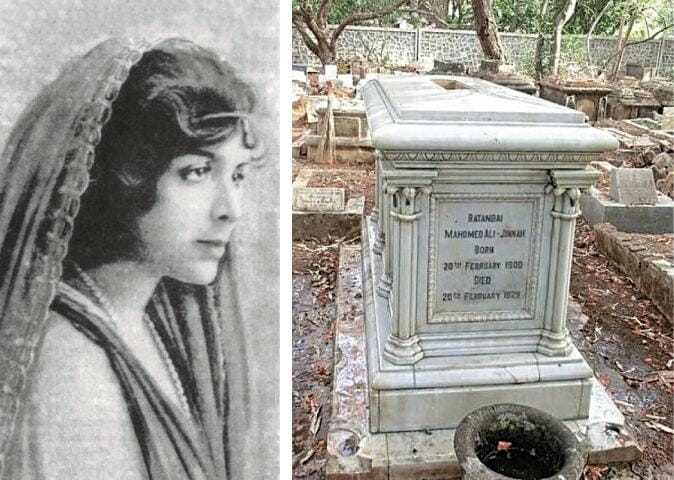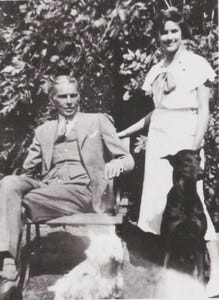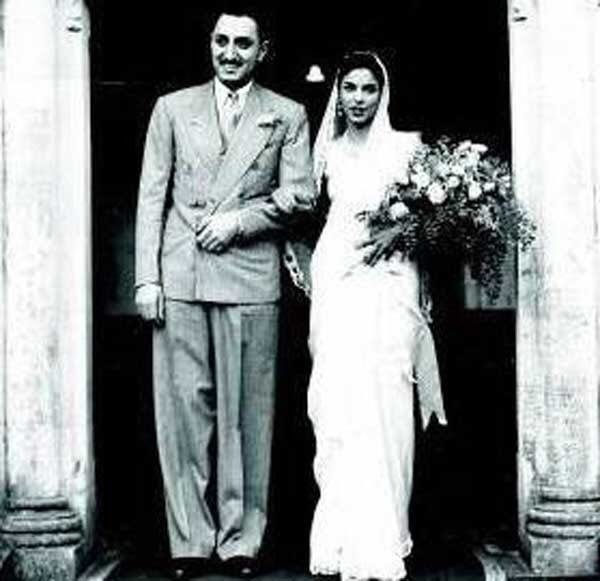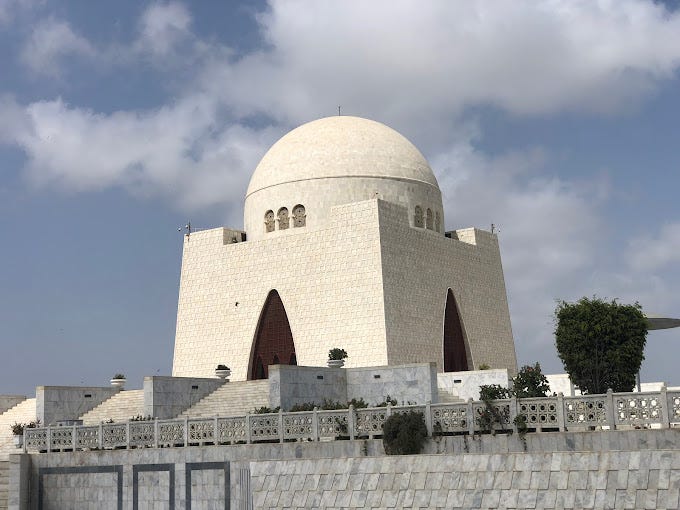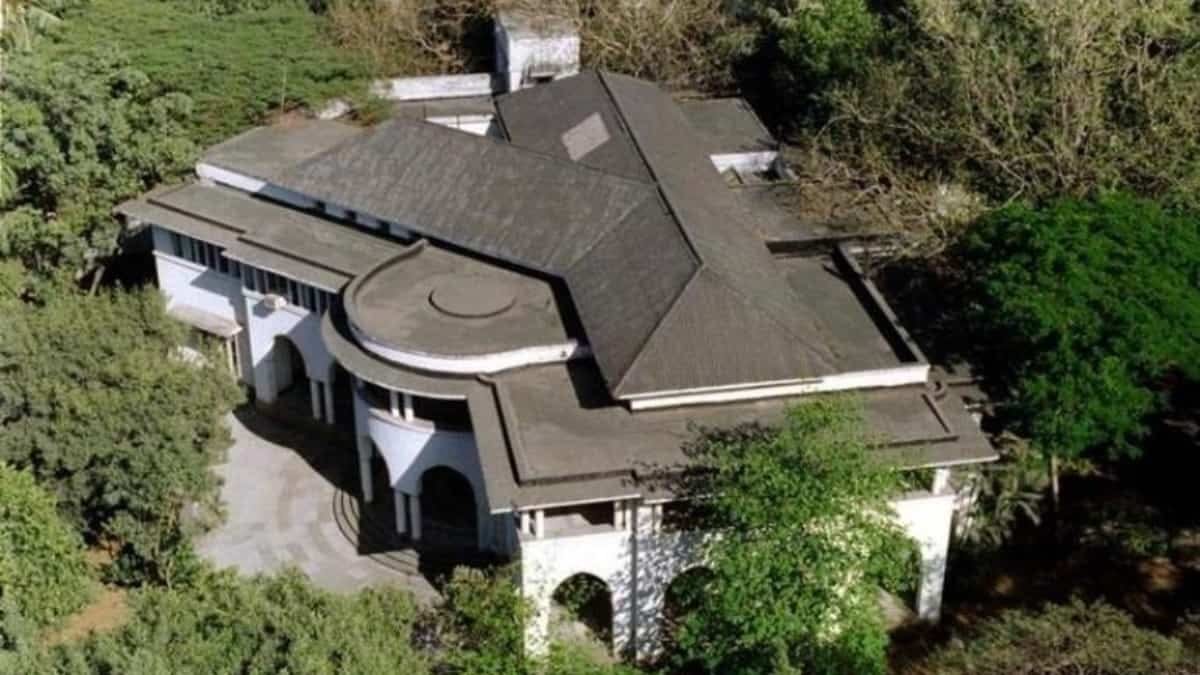Mohammad Ali Jinnah: The Women Who Shaped the Life and Legacy of Quaid-e-Azam
A succinct sketch of the four wonderful women in his life: Mother, Sister, Wife and Daughter, the only Child.
Mohammad Ali Jinnah: Thumbnail Sketch
Mohammad Ali Jinnah, known as the father of the nation in Pakistan, was born on December 25, 1876, in Karachi, then part of British India. His family was of Gujarati Khoja Shia Islam background, and his father, Jinnahbhai Poonja, was a prosperous merchant. His mother was Mithibai. Jinnah was the second child of his father's second marriage. Jinnah was initially educated at the Gokal Das Tej Pal School in Bombay. He was then sent to England in 1892, at the age of 16, to join the Lincoln's Inn and become a barrister. His time in England was formative, exposing him to Western political and legal ideas.
Return to India from England
Upon returning to India, he began his legal practice in Bombay and soon became a leading lawyer. He joined the Indian National Congress in 1906, initially working for Hindu-Muslim unity and India's independence. However, over the years, he grew disillusioned with the Congress and its policies, which he believed were not adequately representing Muslim interests. This led to his increasing involvement with the All India Muslim League from 1913.
Part of Freedom Struggle— demand for ‘Pakistan’
Jinnah's advocacy for Muslim interests intensified in the 1930s and 1940s, especially with his push for the Pakistan Resolution in 1940, which called for the creation of separate states for Muslims. His insistence on the Two-Nation Theory posited that Muslims and Hindus were distinct nations, with their own customs, religion, and traditions, and as such, Muslims should have an independent nation. The term "Pakistan" was coined in 1933 by Choudhary Rahmat Ali, a Pakistan Movement activist, as an acronym of the northern states of Punjab, Afghania (North-West Frontier Province), Kashmir, Sindh, and Baluchistan. The "stan" part means land, essentially translating to "Land of the Pure" in Persian and Urdu.
Bloodshed on the D-Day
Jinnah's role in the partition riots and Direct Action Day in 1946 has been a point of contention. While he called for Direct Action Day on 16th August, 1946, to demand a separate Muslim homeland, leading to massive communal violence in Bengal, especially in Calcutta, his exact role and intentions are debated among historians. After the partition of India and the establishment of Pakistan on August 14, 1947, Jinnah became the new country's first Governor-General. However, his tenure was short-lived as he died on September 11, 1948, in Karachi. He was buried there in a large marble mausoleum, Mazar-e-Quaid, an iconic landmark of Karachi.
Complex Legacy
Jinnah's legacy is complex. In Pakistan, he is revered as Quaid-e-Azam (Great Leader) and Baba-e-Qaum (Father of the Nation). His envisioned Pakistan as a secular state is debated and often contested within the country. The title "Quaid-e-Azam" was first conferred upon him by Maulana Mazhar-ud-din in 1938. His life and work continue to inspire and provoke debate, reflecting his impact on the subcontinent's history and India-Pakistan relations. Post-Independence, Jinnah is often viewed critically in India, shaped by prevailing narratives.
Not all Muslims in West Punjab Favoured Partition
Not all Muslims in pre-partition regions supported partition. The Unionist Party, led by Sir Sikandar Hayat Khan, won the 1937 Punjab Legislative Assembly elections advocating for a united India. Yet, the end of the Second World War and the unexpected victory of the Labour Party in Britain under Prime Minister Clement Attlee, however, accelerated moves toward Independence. Attlee's urgency post-war, coupled with rising communal tensions and widespread rioting, led to the mass movement and migration of populations on an unprecedented scale. In this tumultuous context, Pakistan was a nation born in a cauldron of confusion and chaos, ‘conceived’ not solely by Jinnah's vision and advocacy for Muslim representation but also by the larger historical and geopolitical shifts of the time.
The Women in his Life
While still revered as a larger-than-life masculine figure in Pakistan, Mohammad Ali Jinnah's life was significantly influenced by the women close to him, each leaving a distinct mark on his personal and public life. Here are insights into the four remarkable women associated with him: his mother, wife, sister, and daughter— his only child. Each made a quiet, unique, and distinct impact, often remaining behind the scenes or ‘purdah’, and shunning the limelight during his lifetime.
Mother: Mithibai Jinnah
Mithibai was Jinnah's mother, a woman of the Khoja Muslim community from Gujarat. Though not much is documented about her life, it's known that she was a strong influence in the early years of Jinnah's life. She was a figure of comfort and discipline for him, playing a role in his upbringing and initial education. Mithibai passed away in 1893, well before Jinnah's political ascent. Her legacy lives in the values and early education she provided Jinnah, which later shaped his life and career.
Wife, Maryam Jinnah
Maryam Jinnah, born Rattanbai Petit, was the daughter of Sir Dinshaw Petit, a wealthy Parsi businessman from Bombay. She met Mohammad Ali Jinnah around 1916 when she was only 16 years old, and he was 40, marking a significant age difference of 24 years between them. They first encountered each other at a reception in Darjeeling, and she was immediately taken by his personality and intellect. Rattanbai, known as Ruttie, was part of Bombay's elite Parsi community and was known for her beauty and modern, spirited personality.
The couple married in 1918 after Ruttie turned 18, converting to Islam and thus becoming Maryam Jinnah. This conversion and marriage led to estrangement from her family and also caused a scandal in both the Parsi and Muslim communities due to the religious and age differences. Their marriage was initially a love match, marked by deep affection and intellectual companionship.
Their only child, Dina Wadia, was born on August 15, 1919. The early years of their marriage were reportedly happy, filled with love and mutual respect. However, over time, the marriage faced strains. Ruttie felt isolated due to Jinnah's increasing involvement in politics and his frequent absences from home. Her health began to deteriorate, and the relationship became strained, leading to a life of relative isolation.
Ruttie's health continued to decline, and she passed away on February 20, 1929, just days after her 29th birthday. The cause of her death was reported to be an overdose of sleeping pills, but it was never clear whether it was accidental or intentional. Her death left Jinnah devastated, marking a significant and profound loss in his personal life.
Maryam Jinnah (Rattanbai) is buried at the Khoja Shia Isna Ashari Cemetery in Mazgaon, Mumbai. Her grave remains a testament to a life that was deeply intertwined with one of South Asia's most significant political figures, yet also marked by personal tragedy and the complexities of interreligious marriage in the early 20th century. Her story continues to evoke interest as part of the larger narrative of Jinnah's life and the historical period in which they lived.
Sister, Fatima Jinnah— Madar-e-Millat
Fatima Jinnah, known affectionately as Madar-e-Millat, or Mother of the Nation in Pakistan, was an influential figure in the country's history, especially notable for her role in the years following her brother, Mohammad Ali Jinnah's demise.
Personal Life
Fatima Jinnah was never married and had no children. She devoted her life to her brother and, after his death, to the nation of Pakistan. Her life was marked by her commitment to political causes and her advocacy for democracy and women's rights. She lived a life of public service, choosing to focus on her professional and political career rather than personal domesticity.
Political Activity
After the death of her brother in 1948, Fatima became an even more prominent figure in Pakistan, continuing her involvement in politics and social work. She co-founded the Pakistan Women's Association which played a critical role in the settlement of the women migrants (Muhajirs) in the newly formed country. She was particularly vocal about women's rights, child health, and education.
Electoral Battle with General Ayub Khan
Fatima Jinnah's most notable political activity was her participation in the presidential election of 1965 against the military dictator of Pakistan, General Ayub Khan. She stood as a candidate for a coalition of opposition parties called the Combined Opposition Parties. Her campaign was a significant challenge to Ayub Khan's regime, and she drew massive crowds wherever she went. The election was widely believed to be rigged in favor of Ayub Khan, leading to widespread controversy and claims of fraud. Despite the defeat, her campaign made her a symbol of resistance against military rule and garnered her immense respect and love from the Pakistani populace.
Later Years and Death
Fatima continued to be a vocal critic of government policies and an advocate for democracy until her later years. There were no public accounts of her being imprisoned by Ayub Khan, but she did face restrictions and was under surveillance. Her outspoken nature and political involvement made her a thorn in the side of the military regime.
Fatima Jinnah passed away on July 9, 1967, in Karachi. Her death was mourned nationwide, and she was buried next to her brother at the Mazar-e-Quaid, the mausoleum built for Mohammad Ali Jinnah in Karachi. Her legacy endures in Pakistan, where she is remembered as a leading figure in the fight for democracy and a symbol of strength for Pakistani women. Her political and social work continues to inspire many, especially in terms of her dedication to public service and her role in the early years of Pakistan's formation.
Dina Wadia, the Daughter— the only Child
Dina Wadia was the only child of Mohammad Ali Jinnah and his wife, Rattanbai Petit. Born on August 15, 1919 in London, her life story is indeed marked by a poignant irony reflecting the complex interplay of personal, religious, and cultural identities in the South Asian context.
Marriage and Family
Dina married Neville Wadia, a prominent Parsi businessman from the prominent Wadia family, in 1938. This marriage was against Jinnah's wishes, reflecting a certain rebellious spirit and independence of mind akin to her mother's. The irony lies in the fact that while Jinnah married a Parsi woman, his daughter too chose a Parsi partner, a decision that reportedly led to a strain in her relationship with her father. The marriage produced two children, a son named Nusli Wadia, who became a well-known Indian businessman, and a daughter, Diana N. Wadia.
Life and Legacy
Dina Wadia lived most of her life in India and maintained a relatively private existence compared to her illustrious father. She lost her mother when she was barely nine years old and was brought up by English nannies and Indian maids, under the watchful of her father’s younger sister, Fatima Jinnah. She alone had the freedom to trifle with Jinnah, playfully taking legal briefs from the hands of the emerging barrister, and coaxing him to set aside work to escort her to the theatre shows in London. After her marriage, she continued to live in India, even after the partition, which created a natural distance between her and her father's political legacy. Her life was marked more by her identity as a member of the prominent Wadia family rather than as Jinnah's daughter, reflecting her personal choices and the private nature of her life.
Dina was known to have visited Pakistan occasionally and maintained some connection with her father's legacy, although she largely stayed out of the political limelight. Her identity as Jinnah's daughter often brought her into public attention, especially in discussions regarding the history and legacy of her father, including but not limited to the disputed inheritance of the palatial Jinnah House, Mumbai.
Death
Dina Wadia passed away on November 2, 2017, in New York at the age of 98. Her death was widely mourned in both India and Pakistan, bringing to the fore discussions about her unique position as Jinnah's daughter and the complex legacy of her family.
Reflection
Dina Wadia's life reflects the multifaceted nature of identity in the South Asian context, intertwined with issues of nationality, religion, and personal choice. While she did not actively engage in politics or public affairs, her lineage and personal history make her an intriguing figure in the narrative of the Indian subcontinent's history. Her legacy is more personal and less public, but it continues to resonate as part of the larger story of her father and the dramatic historical events that shaped her life and times.
Life and Legacy of Jinnah— his surrogate child ‘Pakistan’
Imminent Death at the time of Independence
The life and legacy of Mohammad Ali Jinnah remain a subject of deep reflection and varying interpretations. His demise in 1948 due to advanced tuberculosis, a condition largely kept secret, has led to speculative historical scenarios. Some ponder whether awareness of his ill health might have altered the intense rush towards partition and Independence or changed its nature. However, these remain speculative musings against the stark reality of history.
Pakistan— a far cry from his original vision
Since he is revered as Baba-e-Qaum (Father of the Nation) in the neighbouring country, it's apt to consider Pakistan his surrogate child. Jinnah's vision of a secular Pakistan, in which Islam and the Islamic laws would have primacy for its Muslim citizens, however, contrasts with the subsequent trajectory of the nation. Despite his intentions, the dynamics of political, social, and religious forces evolved differently, contributing to the formation of an Islamic Republic. The linguistic and cultural rifts, particularly the discrimination against Bengali-speaking citizens in East Pakistan, eventually led to the secession and formation of Bangladesh in 1971. Issues like the MQM movement, the treatment of refugees from India, the contentious saga of Balochistan, and the obsession with Jammu and Kashmir, especially post the abrogation of Article 370 by India, highlight the complex challenges faced by Pakistan. The nurturing of militant groups like the Taliban that have turned against their own establishments further complicates the narrative.
As India progresses rapidly under the motto of "Sabka Saath, Sabka Vikas" (Together with all, Development for all) and the dynamic leadership of Narendra Modi, aiming to emerge as a global guide (Vishwaguru), it paints a contrasting picture to the challenges faced by Pakistan. Jinnah's dream, from the perspective of contemporary India, may seem to have deviated into a complex reality, perhaps a far cry from his initial aspirations.
Mumbai’s Jinnah House
In Mumbai, the Jinnah House stands as a silent testament to a complex past, intertwined with the destinies of both nations. The Godrej family, part of Jinnah's extended relations through marriage, represents a discreet link to this history, emphasizing the personal over the public in legacy.
Acknowledging the Influence these Remarkable Women
In retrospect, recognising Jinnah's pivotal role in founding a nation—often demonised in India—it is poignant to consider how historical, political, and social dynamics have since diverged from his original vision. This contemplation does not seek to lessen his contributions but rather to comprehend the complex legacy he left, a tapestry of aspirations woven with the sobering realities of nation-building and defining Muslim identity in South Asia.
Yet, the roles of these four remarkable women remain either unchronicled or under-highlighted; even as his daughter chose to stay discreet about her heritage. Their impact in shaping the life and legacy of arguably the most influential Muslim leader of the 20th century's first half in the Indian subcontinent is often underestimated or underreported. Our humble article aims to shed light on the influence of these extraordinary women, offering insights for audiences in India, Pakistan, and beyond.

